Sidetracks & Detours present PASS IT ON 34 weekly walkabout Sunday 7th January 2024
Sidetracks & Detours
present
PASS IT ON 34
weekly walkabout Sunday 7th January 2024
Hello, it is always great to catch up with our occasional correspondents whenever we have the opportunity, so when I learned from writer, Tony Brady that he was coming over from Ireland to Lanzarote for a weekend we managed to squeeze in a brief meeting. We met for lunch at xxxx in Arrecife and he spoke about his latest published work, and his meeting earlier in his visit with Lanzarote based poet Rita Schmidt. That he also handed a new short story for us to publish was an extra bonus, and we include it in today´s issue. We also bring you items from The Manchester Harp Festival, The Moscow Drug Club, Jazz In Reading and Hot Biscuits. Peter Pearson plays The Generation Game and Norman Warwick listens to a brass band and delivers breaking news from Lanzarote

.
CONTENTS
Researching History.
CECIL SHARPE: THE SEARCH FOR FOLK DANCE AND SONG
by Michael Higgins
Writing
LISTENING TO TONY BRADY
whilst Taking The Dog To Mile-End

Live Music
MANCHESTER HARP FESTIVAL:
JANUARY 2024
preview by Newsletter
Live Jazz
MOSCOW DRUG CLUB,
Progress Jazz Club, December 2023
Katya Gorrie vocals, Jonny Bruce trumpet,
Mirek Salmon accordion, Andy Bowen guitar,
Andy Crowdybass
review by Trevor Bannister
Jazz On Air
HOT BISCUITS baked by Steve Bewick
A Reader´s Perspective.
All Points Forward to THE GENERATION GAME
by Peter Pearson
Island Insights
SEEING IN THE NEW YEAR 2024
I
review by Norman Warwick

logo Researching History
CECIL SHARP the search for Folk Dance and Song
David Sutcliffe- The Ballad Partners 2003
review by Michael Higgins
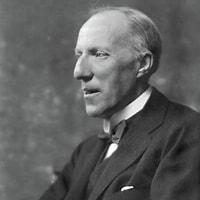
Cecil James Sharp (left), 1859 to 1924, born into a music loving ‘middle class’ family of slate merchants. was a musician, composer, lecturer and tutor whose enduring fame belongs to the folk songs and dances he collected in England and the USA. His name is remembered in Cecil Sharp House, the headquarters of the English Folk Dance and Songs Society, The first half of the name, the original Folk Dance Society he helped to found in 1911, joined with the Folk Song Society (founded 1898) in 1932 after his death. Sharp had been a member of that too. He has long been regarded as the father of English folk dance and song, or at least its resurgence and preservation. A biography Of Sharp was published by A.H.Fox Strangways and Maud Karpeles in 1933. Sharp’s protégé, Maud Karpeles revised it in 1967. David Sutcliffe’s new biography is therefore said by some to be long overdue.

Whereas the first biography is now deemed to be ‘hagiographic’ or ‘deferring’ to the great man, this work (right) sets out to balance the picture by portraying the whole man and the scope and relevance of his work. That work is certainly monumental. By his death in 1924 he had uncovered hundreds of folk songs, Morris dances ,country dances, sword dances, sea shanties, carols and children’s singing games, which might otherwise have been lost to the mists of time. Yet that task only came to him in stages after fits and starts as, first a mathematics graduate originally discouraged from taking up music by parents wary of the uncertainty of a music profession, and secondly through philanthropic and educational work. This was strange as they had named him Cecil in honour of St Cecilia, the patroness of music, on whose feast day, 22 November, he was born. It was with some irony that friends and foes sometimes referred to him as musical key‘C#’ (C Sharp)
His father suggested he try to make his living abroad and he dutifully became first a bank clerk, then a law clerk in Australia, as well as conducting choirs and orchestras for local societies, the musical part of which he continued on return to England in 1892. He gained employment as a music teacher at Ludgrove School and the Hampstead Conservatoire in London before becoming immersed in an often tense struggle against the ‘tonic so fa la’ system then favoured in music lessons and the choice of songs that schoolchildren ought to be learning. It was the education side of life which first drew him to folk song, though he already had a grounding in old ballads and broadside lyrics found in commercially available and archive collections. Likewise the heavy hand of German music and the century long search for German folk music, fairy tale and folklore which defined a fractured German society, kick started by the Brothers Grimm and blossoming up to the 1870 unification, inspired many like Sharp to find an equal pulse in the English folk and folk custom. Yet he was no real concert hall recluse, having rowed for Cambridge, toyed with theosophy, and more enthusiastically followed the socialist path in politics and a freethinking philosophy. He supported the women’s suffrage movement but only the methods followed by the law-abiding suffragistes rather than the law- breaking and headline grabbing suffragettes.
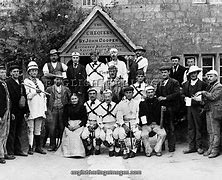
Sutcliffe sensibly sets out his well- researched and determined tale in easily digested sections, presumably in the knowledge hat the majority of his readers will be involved in the Folk music world with its particular interests, prejudices and priorities. Part One charts Sharp’s early life to 1902, which includes Sharp’s fateful encounter with the Headington Morris Dancers (left) at Christmas, and which heretofore was counted as his epiphany into the heady world of folk dance.
Part 2 of this book, however, deals first with Folk Song, detailing his 17 year friendship with fellow Cambridge student and temporary Australian emigrant, but now ordained vicar of Hambridge in Somerset, Charles Marson. It was while visiting Marson in August 1903, that sharp heard his gardener, John England, sing ‘The Seeds of Love’ while he was mowing the rectory garden. Sharp noted the song in his notebook, and for the next few years he and Marson worked as a team, Sharp noting music and Marson writing down the words, as the good High Church priest put feelers out all over the ecclesiastical and social networks for hints of likely singers elsewhere. Sharp and Marson made a good team, thanks to Marson’s good humour, Christian Socialist instincts, intellect and priestly concern. And over the next few years other good Christian clerics, such as the literary and musical phenomenon of Rev Sabine Baring Gould, vicar and lord of the manor of Lew Trenchard in Devon, enter the story. Compilers have lost count of the number of works, articles and stories written by Sabine Gould. Today he is mostly remembered for his authorship of the hymn Onward Christian Soldiers. He and Sharp collaborated on a new edition of Songs of the West, originally put out by Sabine Gould.
In the meantime Sharp had eventually lost his posts at the Hampstead Conservatoire and at Ludgrove School over disputes with committees over dispute about pay and use of music rooms for private tuition. In one instance he was caught in the middle of a spat between the composer Hubert Parry and the committee of its refusal to release a student from her contract at the school so she could sing at a concert in the Albert Hall . Sharp got the blame. And he had had disagreements with the board of Education and the Folk Song Society over his objections to national songs recommended for schools. He began to depend more and more on income from lectures and teaching of folk song and dance to institutions such as the Esperance Girls society run by Mary Nield.
As his folk song expeditions continued in either end of term time or gaps in employment Sharp continued to travel round Somerset and Devon, often by bicycle, adapting gradually into the comfortable manner he perfected with his singers and contributors. One songstress was able to give him songs over many visits and in one instance, when her friends suggested Sharp was using her for his own aggrandisement, replied that ‘it was only his hobby’, to which the friend replied in good Summerset speech, ‘There’s no accountin for some volks vailins’ {some folk’s failings}. All in all, between 1903 and 1914 Sharp collected 244 men and 133 women, noting words and music in his notebook and rushing back to wherever he could find a piano to work on arranging each tune for future performance and publication.
Eventually Sharp had disagreements with Marson and he ended their friendship. Likewise he soon despaired of Mary Neal’’s attitude to folks song and dance as mainly a therapeutic tonic for children, mainly girls, and schools. In 1907 He published his ‘Folk Music, Some Conclusions in which he tried to outline his expanding view on what made a folk song. This developed into his theories of Morris dancing, too. At first he claimed an ancient ritual or ceremonial function, then a group community effort. At first hints of paganism turned the craft into a romantic setting. What he tried to say was that folk song at least differed from ‘formal art composition’ and was community based. It was ancient and belonged to the people of the land, who shaped and altered lyric and air according to societal needs and norms. Through this growing compilation of what he considered native song modern composers might be able to channel a true English national music. And it was the quaint melodies and airs that enticed him rather than the lyrics of songs

In this he was very much supported by fellow folk song enthusiasts. Gustav (von) Holst, (right) who later gave us his own incredible music was very encouraging.
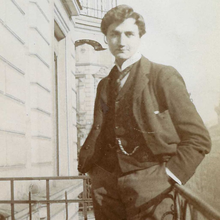
So, too, was .Ralph Vaughan Williams (left) and George Butterworth, was who were later to produce their own compositions based on folk song.

Greatly opposed to this ‘educational’ idea was Sharp’s reputable and formidable contemporary Folk Song Collector, Frank Kidson, (right) whose vast library of broadside ballads, books and field notes now resides in the Mitchell library in Glasgow. Kidson, a staunch supporter of the English Folk Song Society, owned his ‘task’ was inspired by the old airs his mother used to sing to him as a child, and with the help of his niece Ethel (Emma) Kidson sought out and published collections of north country songs sung by correspondents all over Yorkshire and the north.
The third part of the book dwells on Folk Dance, a new and surprising interest for Sharp, who himself was not a dancer and who had to learn how to note dance steps and figures from the many dancers and Morris Dance teams. Sharp’s mother-in-law, who lived at Headington Quarry in Oxfordshire, invited Sharp and his young family there for Christmas in 1899. Having seen the out of work quarry men who made up the team dancing in the summer, she specifically invited them to dance at her house on Boxing Day. Sharp was fascinated by the dances and of course the dance tunes played by their concertina player William Kimber. Heretofore Morris Dancing had been seen as a Shakespearian phenomenon, since disappeared from polite view and retired to the ‘merrie England’ past of stage play and pantomime. Sharp was surprised to find a living example.
From this meeting he and Kimber were able to locate other dancing teams in Oxfordshire, note the tunes and movements and consequently teach demonstration dancers the steps. This path was to lead to the preservation, and then revival of what came to be termed rather incorrectly as ‘Cotswold Morris’, danced by men in white trousers, wearing bell pads on their shins and waving flowing handkerchiefs as they danced. Some dancers used sticks as well and over time Sharp was able to follow a longsword collecting expedition to Yorkshire, through a network of informants, and north of the Tees, Rapper Sword dancing from Northumberland. From all this work came the Morris Book in its various editions over the years which he compiled with H. MacIlwaine.
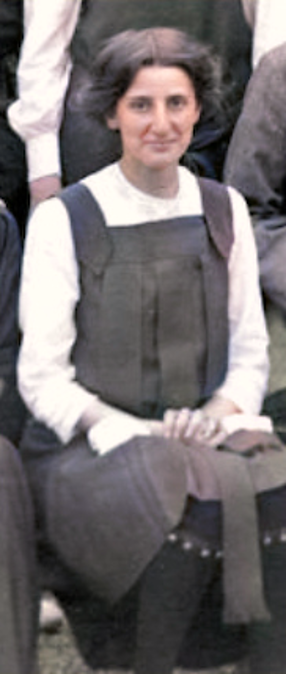
This adventure bloomed another in Part 4. The outbreak of war in 1914, and the drying up of work in Britain led Sharp and his protégé , Maud Karpeles, (right) to the Appalachian Mountains of the USA to collect any originally English (or at least British) folk music, resulting in the publication of English Folk Songs from the Southern Appalachians.
Part 5 deals with sharp’s last few years and the toll on his health endured through a fitful life plagued by asthma and bouts of eyestrain and severe ocular pain. His output was phenomenal and his determination to carry on with the life task of folk music and dance was balanced by his dogmatism, irritation with the views of others he disagreed with, ,and a sort of cavalier attitude to some of his helpers. Balanced against these was the awe he seemed to feel in the presence of rather old and bemused countryside singers, voicing molodies with strange keys arrangements and phrasing which he felt had in them the true musical past of the ‘Folk’.
David Sutcliffe gathers up the folds of his tale with the criticism that has gathered sine Sharp’s glory days as England’s Folk champion. He cites criticism of Sharpe’s logic of trying to teach children out of fashion songs sung by old folk, likewise Morris Dancing practised and devised by men (and pretty aged men largely) to young girls. And as for the ‘men’, he points out that The Folk Song and Folk Dance Societies were largely composed of women. Sutcliffe cites revisionist views expounded by David Harker in Fakesong, plus others, in which Sharp was accused of poor selection (he could only cycle so far and inverview only a limited view of singers. His view of Folkdance and song was biased and that despite his finding singers who had learnt their songs in the community, the songs could ultimately be found to have appeared in printed broadsides. So, even today the big question has not been answered: Who are the Folk? And what should be termed folk song and dance?
As a former Morris Dancer (as David Sutcliffe is or was) I can attest to the ongoing unease at answering the above questions. But my experience of the ‘folk movement’ is touched in two places ‘by this book. One is the experience of Sharp observing the Somerset custom of honouring apple trees with cider infused toast and the firing of guns on ‘Old Twelfth Night,(January 17), which would seem to start the twelve day of Christmas on St Stephens or Boxing Day. Our modern calendar dropped eleven days in 1752 so old dates have to make an eleven day adjustment). In last week’s Pass it On, I said that the twelve days of Christmas begin on Christmas Day and end 5th January. The following day, Epiphany or Three Kings Day is when we take down our decorations.
On a less quirky experience, I was the last conductor of the Royton Morris Dancers whose dancers were visited by Sharp’s assistant, Maud Karpeles, four years after Sharp’s death. She had a difficult time noting their dance and getting co-operation from the leader and conductor and his chief concertina player over ‘local control’ and the ‘enticing away’ of the star dancer to a newly formed EFDS style team in another county. Their tensions with the English Folk Dance and Song Society and the Folk movement proved to be long lasting.
David Sutcliffe has written a well researched and annotated book which provides essential reading for anyone interested in not just folk song and dance but in music and music champions of the late Victorian and Edwardian era in general. If it is the singer and not the song which counts this work opens a rich vein. But if it is the song, then there is all to play for. Well done that man.


WRITING
LISTENING TO TONY BRADY
whilst Taking The Dog To Mile-End

Tony Brady is a writer, and quite a conversationalist too. His chat is always laced with stories of some big event or other in various places around our planet.
We met up recently and he told me he had re-contacted Rita Schmidt, a Poet here on the island, who has led a similarly fascinating life to Tony´s. He reminded me that he had interviewed her on a previous visit and reviewed her excellent poetry anthology. He is delighted to say that after letting her know he would again be on Lanzarote on this occasion she had left a welcoming food hamper for him at his hotel. They then arranged to meet up for an evening meal.

Tony advises he met up with Rita, who was born in Switzerland who has made her home here on Lanzarote, for drinks and an evening meal. I had just one long drink – a German 5% Alc. wheat beer – Paulaner – the bottle comes with a tall almost frozen white glass. Rita drank tea. She is a very fit 70’s who has beaten recent health scares. Her sister still lives in Switzerland where Rita was born and Rita’s late husband was a professional saxophonist. Together for many happy years they spent six months of each year in New Orleans, USA.
They then went on to view a public rehearsal of a hundred strong ensemble of musicians and singers. The festival of Reyes is today: the Spanish children receive their Christmas presents. This evening I will join Rita and friends for the children’s public pageant and festival frolics.
phto 2 Tony says he has found a close by and charming off-piste bistro – where he gets breakfast of coffee and toast. It is run by two women of a certain age: photos will surely follow. This morning he asked a bystander to take this photo of The Nativity scene – created by local artists – using just sand.
When I asked him about what he had been working on over the past twelve months Tony referred to his creative work this year as being Celebrating Blaisdon – Poems Fit For A King which has been acknowledged by King Charles 111.
He then handed to me a short story for our consideration. (see below)
WALKING THE DOG TO MILE-END
by Tony Brady
There was always a dog in my lodging house opposite the hospital where I worked. Even so they disappeared regularly as from cherished puppies they soon grew to be unloved mongrels and were rejected by their owners: two teenage boys and their 3 under ten sisters – in favour of yet another puppy
Once, as the latest puppy was being fussed over, I enquired as to the fate of the previous dogs? I was told: “They’ve gone to Mile-End.” After this had happened several times I learned of the family’s unusual dog disposal method. It having been decided that the dog had to go, one of the boys was detailed to take it on a journey by public transport. This involved taking it on a lead to nearby Central Line Bethnal Green Underground Tube station. A brief stop at Stepney Green, then a slightly longer stop at the interchange Mile-End Station. Just long enough to cross to the platform for the return journey and command the dog to “Stay!” as the doors closed and the train headed back to Bethnal Green.
One Monday morning, I finished my Sunday night duty and out of habit and the need of a short walk I called at McDowells, the newsagents, for cigarettes and daily paper which were kept by for me. “Mac.” the owner, told me that he was going away for a few days and that a relative from North London would be minding the shop. My smokes and paper would be kept for collection as usual. Later, as I let myself into my room I noticed a note in my landlady’s hand had been left under the door. “We have all had to go up to Birmingham for a funeral. Could you look after the dog. It’s a bit wild – keep it on the leash. It’s going to Mile-End when we get back. Thanks.”
I picked up the two ten bob notes left with the message. I slept until about five and woke to the sound of a dog barking. At the butcher’s shop I did not take long to collect the standing order of mixed bones. It was dark as I let myself into the unlit basement leaving the street door open to let in some light. The dog was tethered by its leash in a cubby-hole. I let it free to its feed which it ignored as it jumped up at me then ran past me along the passage out of the door and away up into the street. I grabbed the leash and took off after it.
I did not have to go far as the sounds of a dog fight led me round the corner into Approach Road. At about fifty yard’s distance two dogs were like hungry wolves tearing into each other; between the parked cars and into the road they struggled. A weak light filtered through the great plane trees that lined the road on either side. Then a man, who I took to be the other dog owner, aimed a kick landing his boot on my dog’s most tender parts. The fight was over as my dog writhed and howled in pain. Enraged and without thinking, I booted the other man with a well placed kick in his backside as he bent over to retrieve his dog. He fell sprawling onto it while I took to my heels. When I got back to my lodgings after a long detour of the neighbourhood the family dog was fully recovered and sitting waiting at the basement door.
Next morning, I was still shocked from the previous night’s “assault” on a local dog owner and while it was still dark, I headed for the newsagents. A customer on his way out of the shop detained me briefly: his father was a patient in the TB Wing a ward I worked on. I glanced over his shoulder into the newsagent’s window and glimpsed the person in the shop behind the counter dealing with a customer. It was the man that I had kicked the night before. I retraced my steps rapidly and returned home.
I decided that the dog had to go. Turning it loose was out of the question. Besides, it would surely return to the house. I could not risk taking it out for a walk in daylight. There was no chance of me collecting my daily paper and cigarettes. Worse still, the cafe where I habitually had breakfast was next door to the newsagent. I could hardly disguise myself as the hospital Porter’s Lodge was opposite my front door. The expedient of me taking the dog to Mile-End was considered briefly then dismissed. I was sorely troubled. A loud bang on the front door: the postman.
As I took the mail I noticed two policeman on the far side of the street. Could it be my house that they were peering up at? Surely they were coming to arrest me. In my imagination headlines in the East London Advertiser glared: “Hospital nurse assaults dog walker!” Then the telephone rang. My landlady’s husband was using a coin-box telephone and the money was running out. There was just time for him to say they would not be back for a least a fortnight.
The dog had to go. But how? No such thing as a pet’s Hotline then. I decided to pass the dog off as a stray and ‘phoned the RSPCA. They soon put me onto The Battersea Dog’s Home. The duty person asked “Could I please take it round to the police station in Bethnal Green for collection by their van?” I considered saying that it had just bitten me and that I couldn’t walk. But “Would a 10 shilling donation for its keep help?” I ventured. About two hours later a van came round and “the stray” was placed tenderly within by two young women wearing jodphurs. I was invited to visit the Home as a canine Samaritan whenever I wished. My request to home a “Peter Pan” dog would certainly be considered they indicated as they drove away.
For the rest of that week I took a detour to another newsagents. When Mac returned and queried the uncollected papers etc., I said that I had taken up an unexpected invitation to stay with friends down in Gloucestershire. He mentioned in the ensuing chit chat that his helper had been kicked while out walking his dog and had “Reported the bastard at Bethnal Green police station!” adding that because it was so dark a description was not possible. “Someone round your way, I think…”
Before the family’s return, I went over to Battersea Dog’s Home and chose a charming Jack Russell/Irish Terrier cross. Happily “homed” by the time the family returned, the girls took to it immediately. Why is it a Peter Pan dog they asked?” “It never grows up” I said. It was still there three years on when I moved away.


Live Music
MANCHESTER HARP FESTIVAL:
JANUARY 2024
We’re delighted to announce the Manchester Harp Festival will take place on Friday 19 January and Saturday 20 January 2024, led by Artistic Director Louise Thomson.
There will be world-class performances, workshops, meet the artist events, children’s activities and an exciting competition for harpists of all abilities
Book an all-access ticket to the two-day festival – including both evening recitals and access to the full day of workshops. You can find full bios for all performers and workshop leaders in the Manchester Harp Festival here.
There will be world-class performances, workshops, meet the artist events, children’s activities and an exciting competition for harpists of all abilities.
FRIDAY 19 JANUARY
1.30pm: Free lunchtime harp recital from Students of Chetham’s School of Music
7.30pm: Opening Night Recital
SATURDAY 20 JANUARY
9am onward: Live finals of the Manchester Harp Competition
A full day of workshops, masterclasses, demos and performances (book your day ticket or get access via our full festival ticket)
7.30pm: Headlining performance by Anneleen Lenaerts
The festival is generously sponsored by Salvi Music, London, who will be exhibiting their beautiful collection of both Salvi and Lyon & Healy harps for you to try out.
We’re so excited for everyone to come together to celebrate the enchanting melodies and ethereal sounds from one of the most remarkable instruments ever created.


Live Jazz
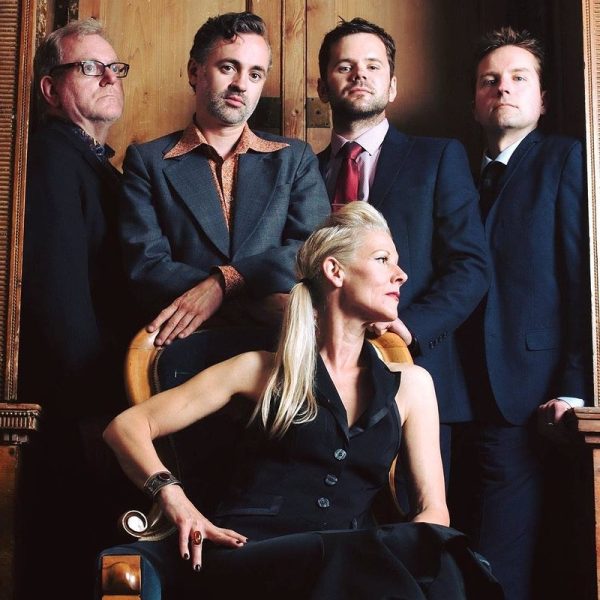
MOSCOW DRUG CLUB,
Progress Jazz Club, December 2023
Katya Gorrie vocals, Jonny Bruce trumpet,
Mirek Salmon accordion, Andy Bowen guitar,
Andy Crowdybass
review by Trevor Bannister
photo 1 What better way to herald the coming of Christmas than to suspend belief for a couple of hours in the company of Katya Gorrie and her band of troubadours and accept an invitation to join them in the subterranean depths of the Moscow Drug Club, a place where members can ‘have a smoke’, cock-a-snoop at authority, relax in the musical intimacy of its intoxicating atmosphere ‘where the Reds play the blues’.
Dark and jam-packed, the air is charged with the irresistible force of anticipation. Whose shoulders might we rub against? What colourful tales might they have to tell.
The extravagantly dressed ‘Jezebel’ jostles everyone aside with a startling entrance to a trumpet fanfare and a flurry of flamenco guitar. I overheard someone whisper, ‘She’s no better than she ought to be’ as we listen, mouths agog, to her confession of betrayal, deception and deceit. The front of it all.
Heads turn to Eartha Kitt – adorned with a ‘Mink Shrink’ – as she freely offers guidance on how to use feline guile to acquire the trappings of material success. ‘And if ever you should be faced with a choice between love and a Jaguar’, she brazenly declares;’ always take the Jaguar.’
As Eartha slinks away into the shadows ‘The Gypsy With the Fire in His Shoes’ grabs our attention with a dramatic pose in the centre of the floor. Urged on by the rhythmic pulse of the band and the enthusiastic clapping of the thronging crowd, he dances as if his life depends on it. Wow!
But the clamour and excitement are short-lived. The unnerving presence of ‘The Voodoo Queen of New Orleans’ makes itself felt as she prepares to perform her dark arts in the deepest recesses of the cavernous basement. Not far away the disconsolate figure of Tom Waits sits at the bar, deep in conversation with a yawning bar tender, as he shares the tragic series of mishaps that befell ‘A Jockey Full of Bourbon’.
In not a moment too soon, Queenie, the Cutie of Burlesque arrives to dispel the gloom with a teasing ‘Strip Polka’. ‘”Take it off, ” “Take it off” the customers shout. But Queenie, ‘always the lady’ and with her heart firmly set on one day retiring to a farm, STOPS … as ‘always just in time!

Will Queenie fulfil her dreams, Jacques Brel wonders as he reflects on his own memories of ‘The Port of Amsterdam’, or will it all end in disillusion and bitterness? Before we can ponder the question too deeply ‘Two Guitars’ explode with joy and restore life to the party in time to welcome the arrival of the sensational Little Miss Sunshine with her jivey solution to all problems, ‘When I Get Low, I Get High’.
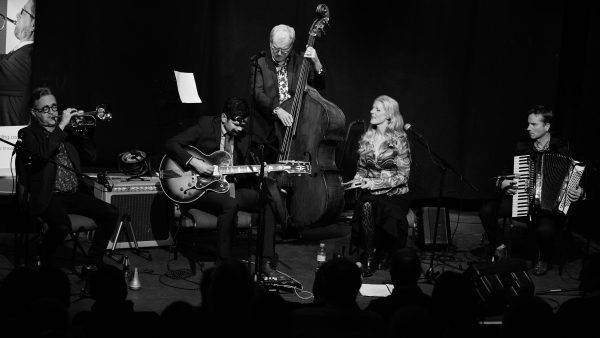
Oh no., here comes trouble in the insinuating form of ‘The Serpent’. Whenever it makes an appearance something nasty is bound to follow. Sure enough, the grim-faced musicians announce that ‘Ol Man Mose is dead; ‘he’s kicked the bucket’. Blazing trumpet notes soar to the heavens to give this much loved little old man with a crooked nose, the best send off anyone could wish for.
Amid the outpourings of grief and emotion three figures stand arm in arm to reflect on the strange vicissitudes of life. Jacques Brel flicks through a ‘stupid ass way’ bundle of images and memories – “My adventures, or should I say, misadventures as ‘Jackie’,” he declares with a wry smile.
“Why dream about yesterday?” asks Miss Peggy Lee. “Why dream about today. Think about ‘Man᷉ana (Tomorrow)’, ‘Man᷉ana is good enough for me”.
‘Just Dance Me to the End of Love’, sighs Leonard Cohen.
The resident band, as fine a group of musicians as can be found anywhere on the planet, strike up the chords of ‘Christmas Time in New Orleans’ to close the Moscow Drug Club for the night and to send home its members in true festive spirit.
But it’s the captivating whisper of another tune that lingers in the air as we make our way through the bar and into the street – ‘Misirlou’ – an anthem for unconditional and universal love.
Watch out for the next opening of the Moscow Drug Club!
Happy New Year!!!
Photo by Steve Foster @jazzshots (Instagram & FB)

Jazz On Air
HOT BISCUITS baked by Steve Bewick

Welcome to a new year of jazz broadcasts from Hot Biscuits. Our New year starts with an interview with Jenny Bray Music talking about her new CD, `One hare one owl` and her tour in America.
I’m starting the broadcast with a blast of nostalgia from Spanner Big Band. Following from the countdown is a piano duo medley from Jaelee Small with three favourites of mine.
Andrew McCormack Trio follows those with `someone else’s song` from their recent CD. Polly Gibbons gives us a full version of, `Towards The Sun`. You can then walk the `seven steps to heaven` next with Simon Spillett and Band.
The two closing pieces of the programme come from John Crawford‘s Q, Pizza X and a solo guitar piece from Nigel Price, `Spring Can Really Hang You Up The Most`. If this looks interesting, then PAS IT ON to all your like-minded and jazz loving friends, then join me 24/07 at www.mixcloud.com/stevebewick/


A Reader´s Perspective.
All Points Forward to THE GENERATION GAME
by Peter Pearson

I recently cames across an article (on an american website: therealeasyed.com ) titled The Aging of the Americana Music Audience. I was unable to establish the date it was written but as it referred to Molly Tuttle (left) being 26 and she is now 30, it means the article is now four years old, so 2019.
The author voices concern that when he looks round the audience at Americana gigs, they all seem to be in his age bracket of 67 years old. As one of several examples he cites a Molly Tuttle concert who was 26 at the time but the audience was predominantly of the baby boomer generation.He asks why Molly Tuttle plays to an audience of mostly grandparents, and what this means to the sustainability and growth of this style of music? He wonders why their contemporaries aren’t buying tickets to their concerts.

He argues that it is not that young people are not spending money on gigs. Witness the demand for Taylor Swift (right) concert tickets. No, he thinks that the cause is reduced media exposure of the music genre, coupled with the wholesale closure of venues where the artists used to appear.
Whilst his observations were of the American music scene they mirrored many of my own thoughts about the UK.
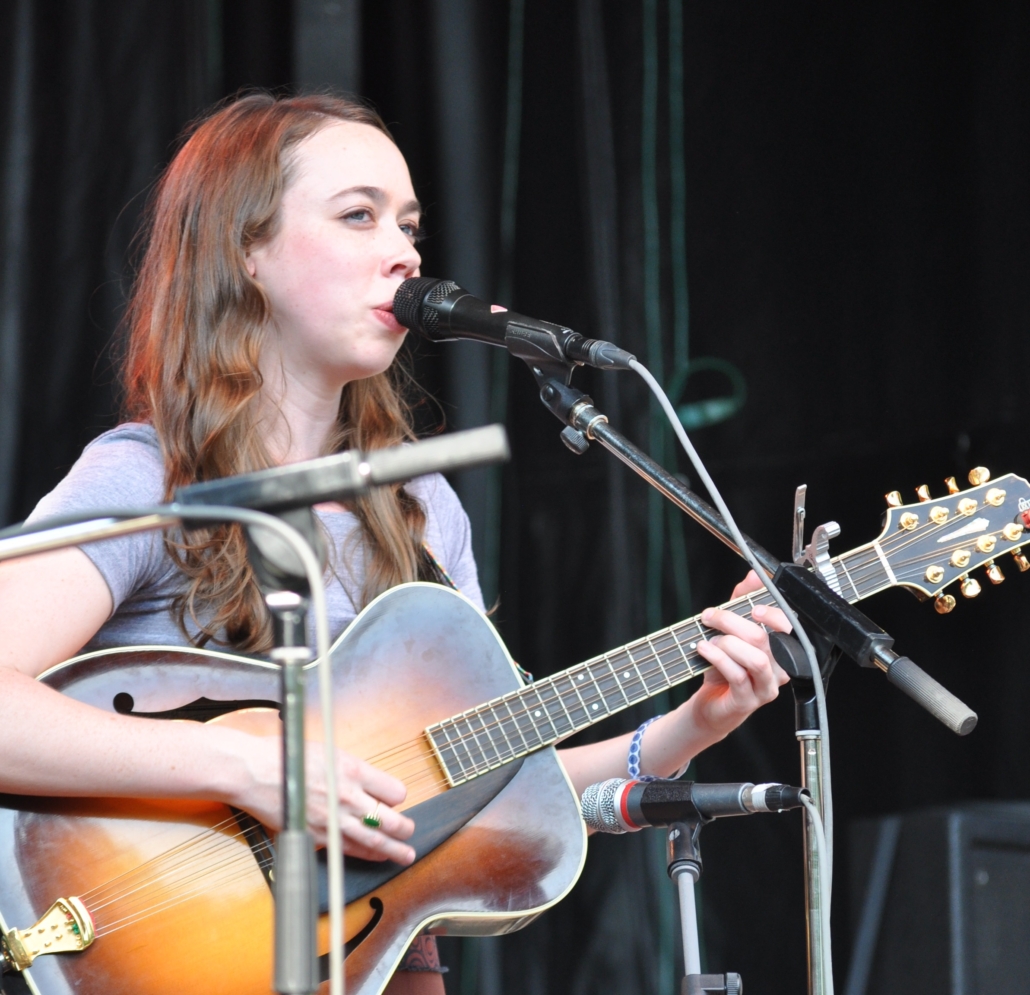
When I attended the 32 year old Sarah Jarosz’s (left) gig in October at Band on the Wall I was expecting to be one of the oldest people in the audience. I was not. They were all of a similar age to me.

Prior to that gig my post covid gigs had been to see longstanding favourites such as Beth Neilsen Chapman and Gretchen Peters (right) at Manchester’s Royal College of Music. I noted, but was not surprised, that the audience was mostly my age and I reflected that the last time I had seen Beth had been in the much larger capacity Bridgewater Hall and that Gretchen Peters was announcing that this was to be her last UK tour. One of the reasons she gave for this was that CD sales had dried up. People no longer bought them for home or in the car.
There was no shortage of merchandise on display at the Sarah Jarosz gig but this was an artist who was on the up within the genre and seeking to build an audience and music catalogue. Artists like Beth and Gretchen were looking to wind down.
It was unlikely that they could maintain or improve their position as their audience was on the decline.
It remains to be seen if these newer younger artists are able to have the same longevity as their predecessors in the face of the excessive cost of touring and meagre income from streaming and record sales and with their audience on the decline and being mostly baby boomers.

When Norman and I were attending gigs in the 90’s we would typically have something to attend nearly every other week, especially early Autumn and Spring. Now I can count the number of gigs I have attended in the last year on the fingers of one hand. I am now finding that some of my favourites are turning up in some peculiar venues. Lucinda Williams (left) last appeared in Manchester at a standing only concert at the Ritz Ballroom. Not a venue likely to attract her traditional aging audience.

Kate Rusby (right) is scheduled to appear in early Spring at the Holmfirth Picturedrome -Last of the Summer Wine country. I have been there to have a ramble and see Norah Batty’s dwelling but never to see a gig. I do believe though that artists such as Kate Rusby often appear there.
Steve Earle swerved Manchester on his last vist in favour of Buxton Opera House. He now tours both in the States and abroad without a band. Tom Russell’s scheduled visit to Bury Met last summer was cancelled due to a long term health condition for which he had been advised to rest. Amazingly he played the London gig three days later but has no plans to return.

Mary Gauthier (left) appears in Biddulph in April at the same Church I went to see the lower profile Thomm Jutz and Eric Brace.
I suspect many of the longstanding promoters of these artists can no longer make it a viable proposition. Relatively small audiences and declining income from CD sales coupled with higher fixed costs have raised the break-even threshold.
In the US there has developed a market for House Concerts where artists perform for a small audience in the home of a benefactor or fan with space to spare.
Grateful Fred in Southport has put on a number of such concerts in a specially designed extension to his house but his more recent events have been at the Bijou Cinema in Southport town centre.
Steve Henderson, aka Mr Kite, has been a longstanding promoter of Americana gigs in the Greater Manchester and surrounding areas but it seems that he has now given it up. His website says no further promotions planned.
Promotions of roots music in this area seem now to have consolidated under the Manchester Music City Banner with maybe some pooling of risk but also perhaps more risk averse in the current climate.
The days of relatively small audiences in intimate venues bolstered by CD sales and an artists wish to build an audience has virtually dried up

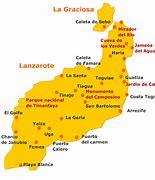
Island Insights
STEPPING OUT INTO THE NEW YEAR
By Norman Warwick

Bringing in the New Year when we lived in the UK was usually a pretty good feeling because we were usually throwing a pretty bad year away. I mean,… weather, politics, rising prices, either Manchester United or Bolton Wanderers or both, being bitterly disappointing, how much worse could it get?
I might concede that winter weather in the UK might be the worst of those deprivations and that, of course, is so offset against the wonderful weather we enjoy over here.
So, on New Year´s Eve, we drove down into the centre of our town in Playa Blanca, parked up by the beach at around 10.00 pm and took a sea shore walk up to Contin´s Ice Cream parlour bar. Our seats at the front outside meant that even among the thousands of people who had congregated in this area, we would have an unlimited view of the fireworks that would be fired off from all the restaurants along the sea front when 2024 crossed our horizon.
A long Coffee Calypso (with a Tia Maria poured in) and a piece of carrot cake and a brandy for Dee took us all the way to the midnight hour and, with a swarming crowd down on the beach and along this sea wall we caught the first sky rockets in sight (left) , heard the loud bangs and their echoes roll away out into the Timanfaya volcano range, some fifteen miles away.
Quite apart from the fantastic firework dance being performed in front of us only yards away we could also look to our left, instead, and identify several firework displays far away on the horizon, along the coast of our nearest neighbouring Canary Island of Fuerteventura. Because of the terrain on the islands, bonfires are restricted to only officially endorsed events once a year, but that means that extra effort and imagination goes into the display of the rockets, sputnicks and bangers and rattlers and fizzers that distinguish and extinguish themselves all along the coast line.
We noticed that even our bar manager and his staff stopped for a moment or two, admiring the spectacle of a clear, starry sky being lit by fireworks.
The crowd added to the noise with lots of unison oohs and ahhhs and blimeys as each new art work was created and announced. There was noise, certainly, but there was no anti-social behaviour of any kind and we didn´t notice, though I´m sure there was one, any police presence at all.
We had a quick coffee back in the bar before we left for home and were chuffed that the manager and staff all shook hands and wished us Feliz Año Nuevo.

2024 dawned as if in the light of The New World. There had even been a drop of rain in the early hours to wash and rinse the pastel blue sky of the morning as we set off on our annual New Year´s Day tradition of taking a figure eight drive starting from our home on the very southern tip of the island, heading up west over the volcano range, (the intersection point of this journey), through Tinajo and over to La Santa, Sports Rehabilitation Centre to the stars. La Santa has a tiny little fishing harbour (right) and huge waves that attract professional and amateur surfers, sometimes in competition mode.
photo 3 We sat and watched massive white tops roaring in behind the harbour wall as the local fisherman cleaned (I´m sure there´s another word for that) their boats.
We drove a few miles down the road past the incredible land mass that is the Sorts Club, to Soo, another tiny village, before driving home via the vineyard roads of the bodegas on La Geria before arriving back in Playa Blanca.
A tortilla baguette and chips and one of the long, cold beers saluted the New Year nicely,…and I was back home in time for Pointless on catch-up.
My New Year´s Resolution is to watch every edition of Pointless, and my wife´s New Years resolution is to leave me if I do!


Don´t forget that we will be back next Sunday with PASS IT ON 35 and , of course, we we will be opening our daily Monday to Friday Blog, throughout the week from Monday to Friday. We will be looking at the incredible longevity and choral music of Acatife, and comparing the dramas of Coronation Street and of South Korea. We will also look at the sound of live music on Lanzarote and the Murder On The Dance Floor in Saltburn. To finally wrap up 2023 we will take a look back at some of the best novels of the year. If even that isn´t enough reading for you then remember to browse through our easy to navigate archives of more than 1,000 free to read items. We also, of course, recommend lots of professional web sites full of great writers, so whether you have a preference for literature, music, comedy, dance, poetry, why not let us point you down through right sidetracks and detours to take you to them,.



Leave a Reply
Want to join the discussion?Feel free to contribute!